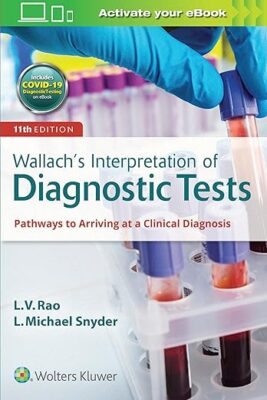11th Edition
Selected as a Doody’s Core Title for 2021 and 2023!
An excellent resource for appropriate test ordering and interpretation, Wallach’s Interpretation of Diagnostic Tests, 11th Edition, helps you save time, avoid errors, and arrive at an accurate diagnosis. Organized into two easy-to-reference sections, this fully revised manual provides comprehensive, practical information on common and uncommon disease states and their diagnosis by laboratory test. The eleventh edition has been revised and reorganized based on reader feedback, helping primary care physicians, subspecialists, physician assistants, nurse practitioners, and medical and nursing students keep pace with a rapidly changing health care environment.
- An easy-to-use organization presents routine and lesser known lab tests first (alphabetically, with detailed descriptions), with disease states following.
- Newly concise and streamlined content is highlighted by abundant tables, algorithms, and bulleted lists and checklists.
- A new pull-out card, “Ask Before You Test,” helps you remember to check key factors that affect lab tests.
- Content updates include new information in the genetic, molecular diagnostics, and neurology testing chapters.
- Frequently ordered tests are included in tabular form, as well as in a tear-out version for convenient clinical use.
- An expanded index helps you efficiently locate needed information.
Enrich Your Ebook Reading Experience
- Read directly on your preferred device(s),such as computer, tablet, or smartphone.
- Easily convert to audiobook,powering your content with natural language text-to-speech.
DOWNLOAD THIS MEDICAL BOOK


















